Nothing has taken the tech world by storm more than AI over the past 12 months.
It began with the launch of OpenAI’s ChatGPT last November, which captivated users with its powerful features and ability to mimic human-like expertise on almost any topic.
Since then, large language models (LLMs) have gripped Silicon Valley. Microsoft has invested big into creating Bing Chat, Anthropic launched its first iteration of Claude, and tech companies left, right and centre initiated their own AI chatbot projects.
But it wasn’t until February 2023 that ChatGPT's market leadership truly came under threat when Google, a long leader in AI research and a tech behemoth, announced the launch of Bard AI. Google's Bard was just as powerful as ChatGPT at launch and could match ChatGPT's capabilities in most cases – from answering user questions to generating content. The chatbot was also an entirely free service, while ChatGPT had already introduced a paid subscription for access to the most powerful version of its chatbot.
Both Google and OpenAI have continued to improve upon the chatbots since their launch, and Bard AI and ChatGPT are much better chatbots today than when they first launched.
But which is better in 2024: Bard AI or ChatGPT? Keep reading as we compare the key differences between Bard and ChatGPT and uncover which chatbot is better in 2024.

Differences Between Google Bard AI and ChatGPT
The main difference between Bard and ChatGPT is the LLMs that were used to build them. LLMs are models built to understand, interpret and generate text using human language.
The better the data LLMs are trained on, the better their ability to generate accurate and readable content. Bard and ChatGPT are run on different LLMs, each trained on different datasets:
- Google's Bard LLM uses PaLM 2, which is trained on data chosen to enhance its dialogue and coding powers, including science papers, maths expressions, and source code. The chatbot also has access to the internet in real-time, allowing it to provide up-to-date responses.
- ChatGPT uses GPT-3.5, which is trained on a pre-defined dataset that hasn't been updated since 2021. While not up to date, the dataset is expansive, allowing the chatbot to give detailed responses on almost any topic. ChatGPT subscribers can also pay $20/month to gain access to GPT-4, a larger and more updated version of GPT-3.5.
Both Bard’s PaLM and ChatGPT’s GPT LLMs are trained on data scraped from articles, books and web pages on the internet, meaning that their responses are based on information that can be found online.
However, OpenAI’s GPT-4 has access to the most data and can generate responses in over 95 languages compared to PaLM 2’s 40 languages. But if Bard does not know the response to a question it can search the web to find a response or recommend appropriate web pages in a variety of different languages.
Aside from differences in data sources and LLMs, there are several other differences between Bard AI and ChatGPT to consider before choosing which chatbot is best for you.
These differences include:
- Accuracy - ChatGPT's larger LLM makes it more accurate than Google’s Bard and enables it to give more detailed information on a wider range of topics.
- Programming Skills - Bard's transition to PaLM 2 has made it noticeably better for coding and programming than ChatGPT.
- Image generation - Bard can read and generate multimedia content by incorporating images taken from Google. OpenAI has a separate text-to-image generator to ChatGPT called DALLE-2, but this is not integrated into ChatGPT.
- Conversational Learning - ChatGPT is designed to learn and maintain context from conversations, and information from every conversation to improve its responses. While Bard also learns from conversations, its ability to do so is much more limited than ChatGPT.
- Privacy - No conversation is confidential with ChatGPT as all information inputted into the chatbot is fed back into its learning algorithms. This makes Bard safer to use than ChatGPT when handling sensitive information.
Here is a table summarising the key differences between Bard AI and ChatGPT:
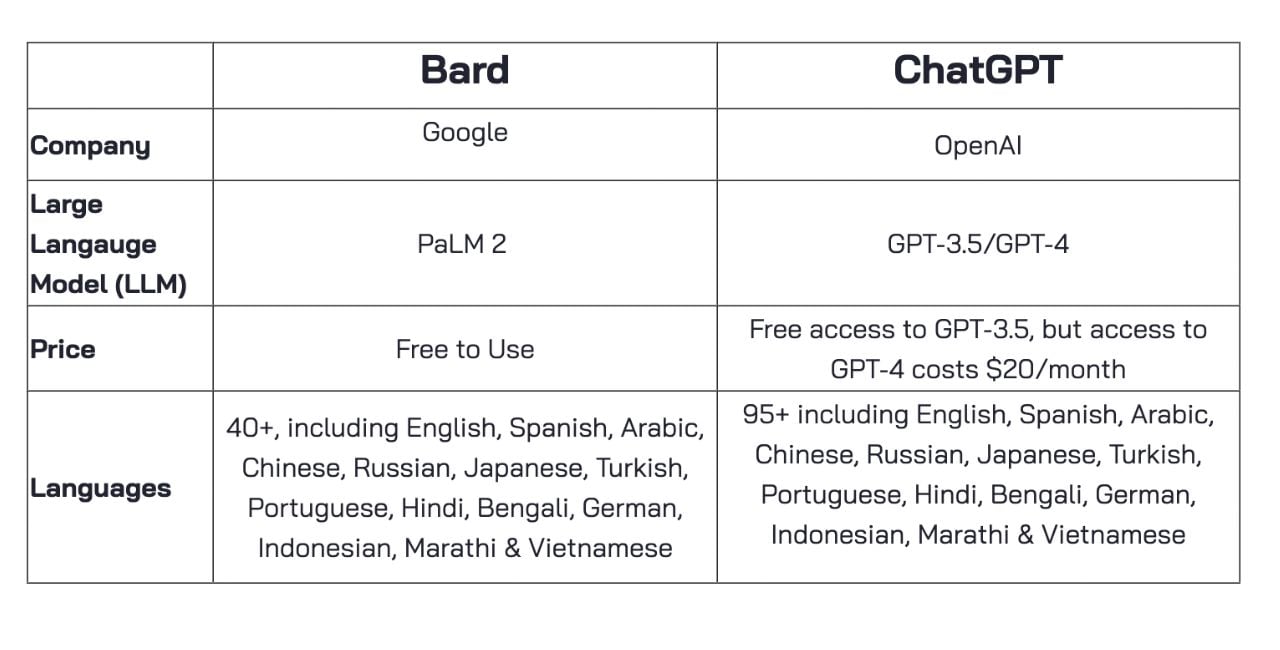 Bard vs ChatGPT: Which is Better?
Bard vs ChatGPT: Which is Better?
While you can use Bard AI and ChatGPT interchangeably for most situations, Bard AI is better at answering user queries and giving more definitive responses. ChatGPT, however, does a better job of generating long-form content and provides more detailed and complex responses to user prompts.
Still, Bard is miles ahead when it comes to answering basic questions or requests and linking to relevant additional information. Bard also gives more up-to-date information due to its up-to-date LLM and access to the internet. ChatGPT, on the other hand, struggles to provide accurate information on events after 2021.
Of course, both ChatGPT and Bard are under development and their capabilities are continuously expanding. Expect major changes, updates and improvements as both chatbots evolve.
Bard vs ChatGPT: Comparing Responses
To get a better understanding of how Bard and ChatGPT compare, we conducted a series of tests on each chatbot to understand how they respond to different user queries.
Our prompts were selected to demonstrate each chatbot’s capabilities and abilities to respond to different requests accurately and effectively. Here are our findings:
1. Bard AI is more up-to-date than ChatGPT
Bard has real-time access to the internet through Google Search, allowing it to incorporate the latest information and news into its responses. Trained on a static dataset not updated since 2021, however, ChatGPT can only access external information through plugins, and this functionality is limited.
ChatGPT users can pay to gain access to GPT-4, which has access to a larger and more recent dataset. But this still does not provide real-time updates like Google's Bard.
ChatGPT's lack of up-to-date information is easy to notice when you ask it a question about recent events or products that have been released since 2021.
When we gave ChatGPT the prompt “What is Google’s Bard?”, for example, it was unable to recognise that Bard was associated with Google due to its outdated dataset.
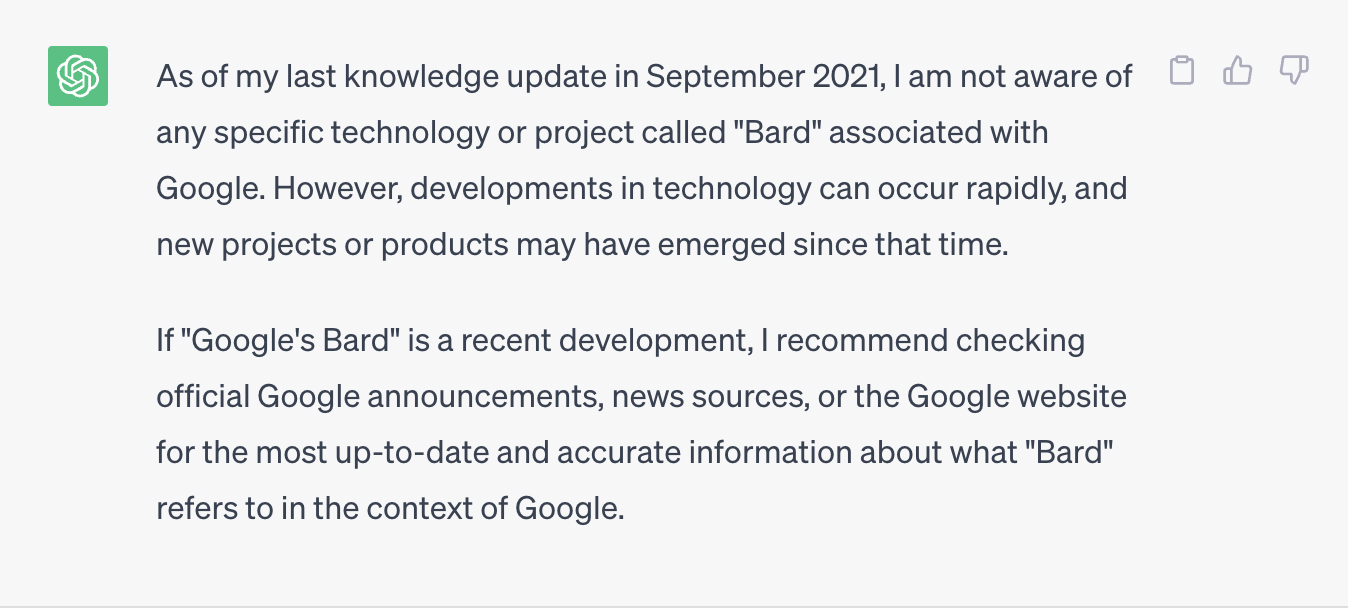
When we asked Google Bard the same question about ChatGPT, however, it told us all about the chatbot and its history, including its latest iterations and developments. It even directed us to OpenAI’s own website to find more information.
2. Bard AI is more concise than ChatGPT
Another key difference between the responses you get from Bard and ChatGPT is their style. Bard is trained on a dataset focusing on factual accuracy and informative responses, leading to more direct and to-the-point responses.
ChatGPT, however, is trained on a more diverse dataset including creative writing and artistic expression, which can lead to more elaborate or descriptive responses.
When we gave ChatGPT the prompt “Write an email draft to my boss asking for annual leave?", for instance, it generated a descriptive, formal email. However, its email was too long and wordy to be used for an actual annual leave request email.
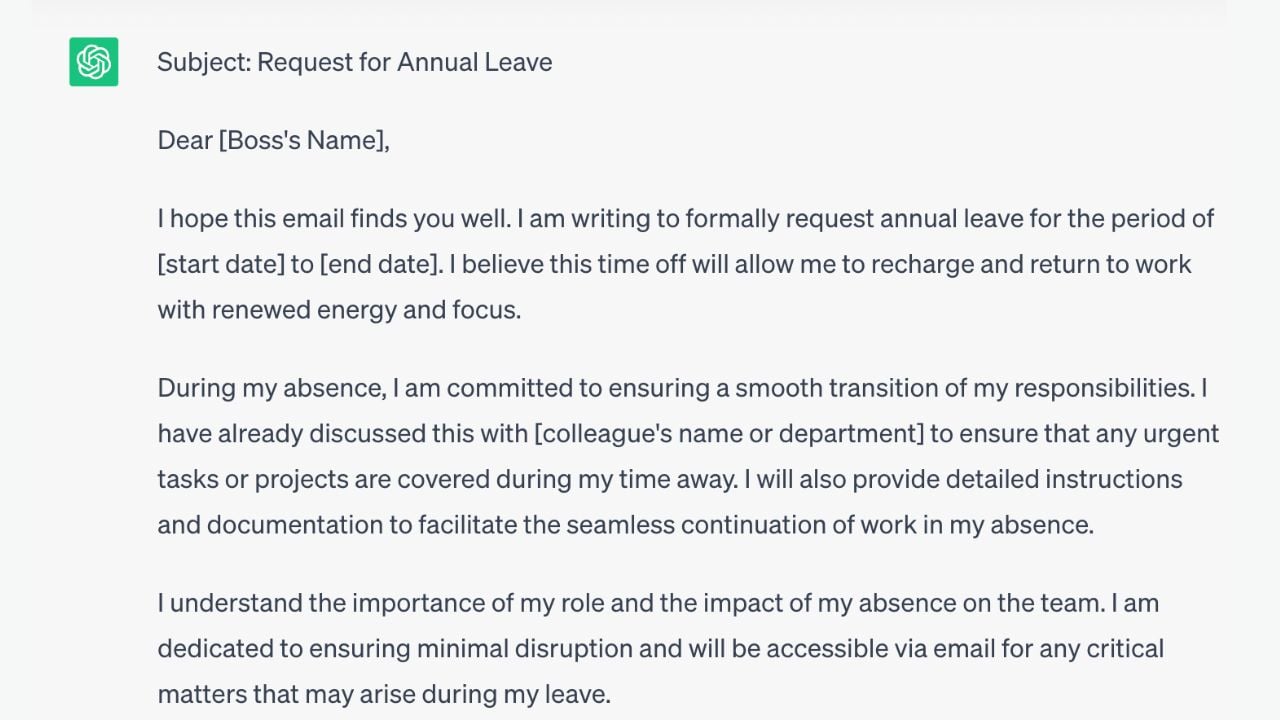
Bard AI: When we asked Bard the same question, its response was much more concise and could pass from being written by an employee.

This is just one example of where Bard is much more concise than ChatGPT. For almost all the queries we tested, Bard could give more direct responses, while ChatGPT seemed to be overly informative and elaborate.
For tasks requiring concise summaries, such as answering factual questions, Bard is more suited. For creative writing or situations when you need descriptive information, ChatGPT is probably the better choice.
3. ChatGPT is better than Bard AI at generating code
One interesting distinction we noticed between ChatGPT and Bard comes when you ask the chatbots to generate code. ChatGPT. is trained on a massive dataset of text and code, including a large portion of code from GitHub repositories.
While also trained on a massive dataset, Bard's focus is broader, incorporating a wider range of text and information.
This leads to Bard having a slight disadvantage over ChatGPT when it comes to code-generation specifically, as ChatGPT's dataset makes it more specialised to responding to coding requests.
When we gave ChatGPT the prompt “Write a Python script to output “Hello World,” for example, it provided detailed instructions for creating the code. It even went as far as including the download link for the Python website, noting that the prompt is basic and that the user may not have Python downloaded.
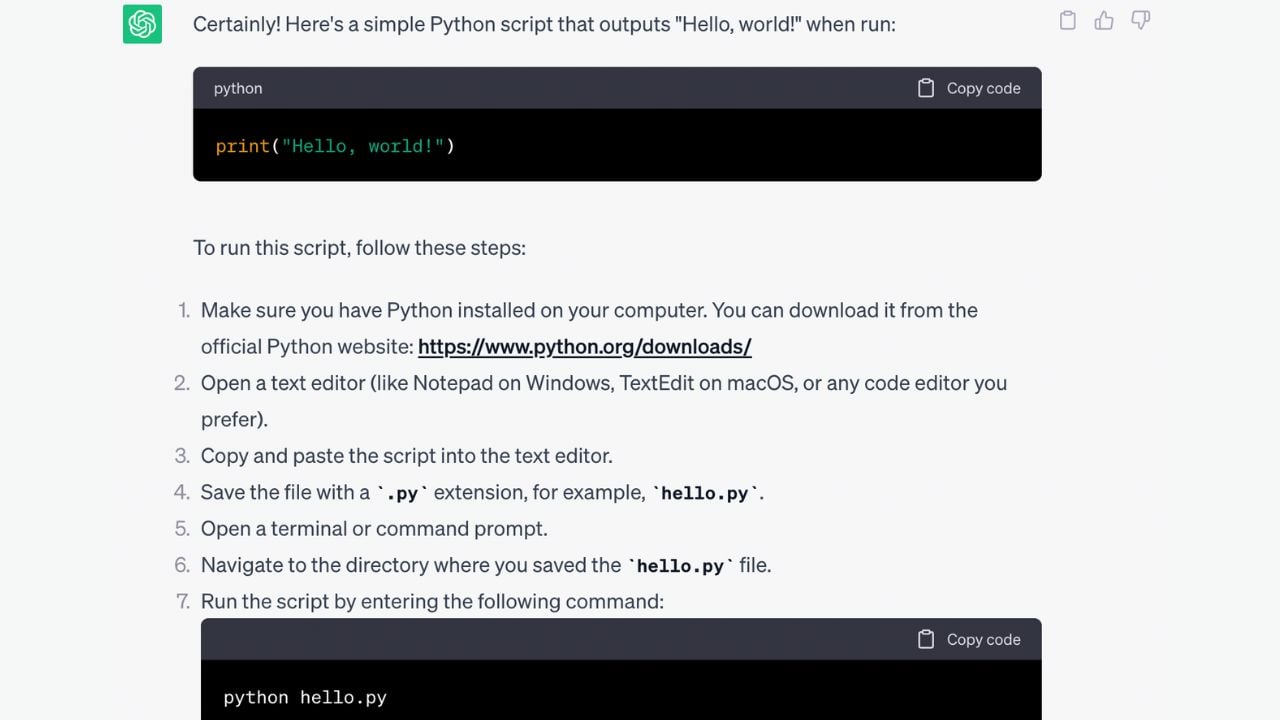
Bard’s response was just as good, providing users with a more simplified response to the query rather than running through the process step-by-step. However, it warns that the code it generates may not be accurate and does not providing any instructions to help users understand the process.
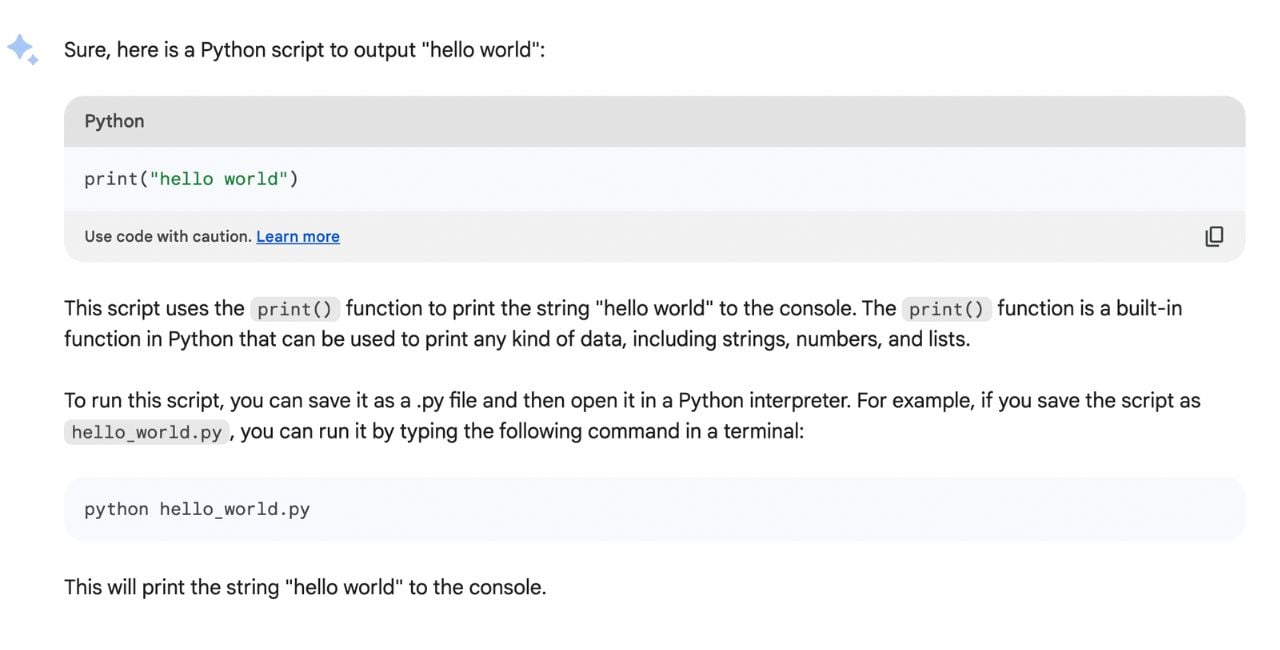
Overall, ChatGPT seems to have a slight edge over Bard AI in code-generation tasks. But it's always recommended to experiment with both chatbots and see which one aligns better with your specific coding needs and preferences.
For simpler code snippets, both models are fine. For more complex tasks, ChatGPT's strengths in code structure and completeness might become more apparent.
Final thoughts
Ultimately, the best chatbot for you will depend on your specific needs and preferences.
If you need up-to-date information and a conversational tone, Bard AI may be more suited. If you need to summarise text or want to generate creative writing, however, ChatGPT may be a better fit.




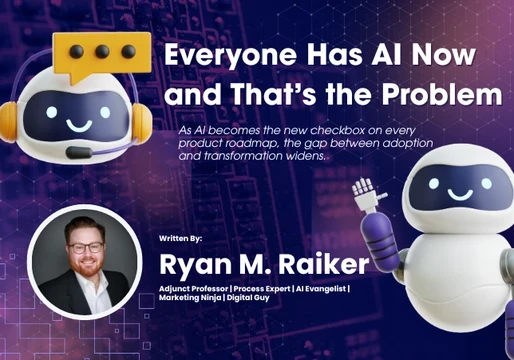


Comments ( 0 )